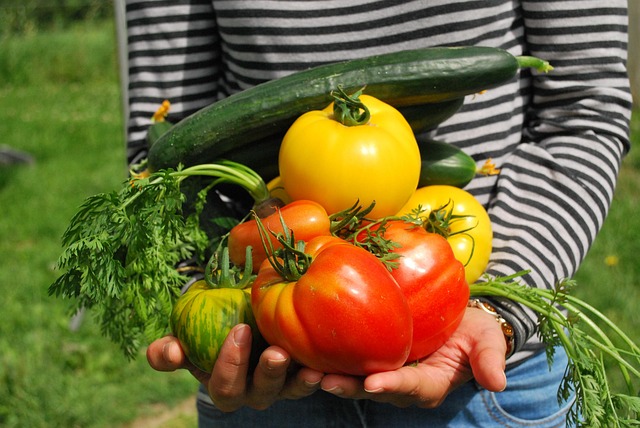Garden Chores in September
go.ncsu.edu/readext?1090426
en Español / em Português
El inglés es el idioma de control de esta página. En la medida en que haya algún conflicto entre la traducción al inglés y la traducción, el inglés prevalece.
Al hacer clic en el enlace de traducción se activa un servicio de traducción gratuito para convertir la página al español. Al igual que con cualquier traducción por Internet, la conversión no es sensible al contexto y puede que no traduzca el texto en su significado original. NC State Extension no garantiza la exactitud del texto traducido. Por favor, tenga en cuenta que algunas aplicaciones y/o servicios pueden no funcionar como se espera cuando se traducen.
Português
Inglês é o idioma de controle desta página. Na medida que haja algum conflito entre o texto original em Inglês e a tradução, o Inglês prevalece.
Ao clicar no link de tradução, um serviço gratuito de tradução será ativado para converter a página para o Português. Como em qualquer tradução pela internet, a conversão não é sensivel ao contexto e pode não ocorrer a tradução para o significado orginal. O serviço de Extensão da Carolina do Norte (NC State Extension) não garante a exatidão do texto traduzido. Por favor, observe que algumas funções ou serviços podem não funcionar como esperado após a tradução.
English
English is the controlling language of this page. To the extent there is any conflict between the English text and the translation, English controls.
Clicking on the translation link activates a free translation service to convert the page to Spanish. As with any Internet translation, the conversion is not context-sensitive and may not translate the text to its original meaning. NC State Extension does not guarantee the accuracy of the translated text. Please note that some applications and/or services may not function as expected when translated.
Collapse ▲VEGETABLES
- Remove spent vegetable plants as soon as possible to reduce carry-over of insect and disease problems. Consider keeping a separate compost pile for diseased plants and do not use that compost in the vegetable garden.
- Plant fall vegetables by mid-month. Sow lettuce seeds every couple of weeks for continual harvest. Cilantro and dill can be sown during cooler weather.
- Look NOW for starts of cool-season crops like cabbage, broccoli, cauliflower, kale and Swiss chard at tailgates and garden centers.
- Insects can be a problem with all the cabbage family crops. Use row cover or a weekly application of B.t. bacteria spray to prevent cabbageworms. Use insecticidal soap for aphis if needed.
- Consider planting a cover crop on vegetables beds to build organic matter for next year’s garden. Mark your calendar to mow and turn it under in Feb or March or leave it as a mulch for the next growing season.
- It’s not too early to make plans for” season extenders”. These are materials and techniques to protect plants and extend the growing season.
PLANT GARLIC NOW
The Western North Carolina Planting Calendar for Annual Vegetables, Fruits, and Herbs says September – November is the time to plant garlic.
How to Grow Garlic
Types of Garlic to Grow
WANT TO STORE WINTER SQUASH?
Some winter squash types keep longer through the winter (up to 4 months!) in cool dry storage
Also they can be preserved by canning or freezing
FRUIT
- To reduce the recurrence of fruit rot in peaches and grapes next year remove all plant debris including mummified fruit left hanging on the plant and lying on the ground.
- Remove weeds and fertilize in strawberry beds where plants are forming next spring’s flower buds. Also water if September rains are lacking.
- Prune blackberries and raspberries and remove the old fruit-bearing canes from this year. Also thin new canes to leave only 4-8 canes per square yard. Read more https://content.ces.ncsu.edu/southeast-regional-caneberry-production-guide/pruning-and-training
ORNAMENTALS
- Now is NOT the time to fertilize perennials and woody plants. Late-season nitrogen can reduce cold hardiness and force growth that can be damaged by hard frosts.
- This is a good time to cut flowers for drying. Good candidates for air-drying include celosia, yarrow, statice, globe amaranth, strawflowers, goldenrod and grasses.
- Leaving some of the few remaining seed heads of coneflower, sunflower and black eyed susan can be good for the birds to enjoy in the months ahead.
- Hold off cleaning up perennials stems and consider leaving them for overwintering pollinators. Read more Garden Cleanup For Pollinators Trim Perennial Stems in Their First Winter
- Make preparations to move houseplants indoors before temperatures drop below 45 F. Check for signs of insects and treat. Rinse foliage and pots, remove dead leaves and cut back long stems. Repot if necessary.
- Now is time to divide peonies that have not flowered well. Leave several “eyes” on each division and be sure to replant them with the eyes no more than 2 inches below the soil surface. Keep them watered this fall.
- Check evergreens for bagworms. Removing them now prevents re-infestation next spring. Visit this link to learn more about Bagworms.
- Pull spent summer annuals from containers and replace them with pansies orornamental or edible kale or cabbage.
LAWNS
- Overseed thin or bare areas as weather cools. Use a blend of “turf-type” tall fescue cultivars at 6 pounds of seed per 1,000 square feet suitable for sun/shade conditions to your site. Apply a starter-type (high phosphorous) fertilizer. Keep the seedbed moist with light watering several times per day. Do not let the seedlings dry out.
CHECK OUT THIS TALL FESCUE LAWN MAINTENANCE CALENDAR
FOR MORE INFO ON FALL LAWN CARE & RENOVATION VISIT CAROLINA LAWNS





